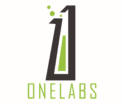📌 Introduction
Agriculture has always been the backbone of human civilization, shaping societies and economies for millennia. While traditional farming methods have stood the test of time, technological advancements are reshaping how we cultivate land. One such breakthrough is soil testing, a modern agricultural approach that brings precision, efficiency, and sustainability to farming.
In this blog post, we’ll compare traditional farming methods vs. modern soil testing techniques, supported by a real-world case study and statistical insights relevant to today’s agriculture trends. This content is tailored for modern farmers, agronomists, and readers interested in sustainable agriculture.
🌾 Traditional Farming Methods: Still Rooted in Intuition
Traditional farming practices have been passed down through generations and often rely heavily on a farmer’s intuition, experience, and visual assessments. While time-tested, these methods have significant limitations in today’s data-driven agricultural environment.
🔄 Uniform Input Application
Fertilizers and water are commonly applied uniformly across fields. However, soil properties vary significantly, meaning some areas may be over-fertilized while others remain undernourished. This not only wastes resources but also contributes to soil degradation and water pollution.
📉 Limited Data Collection
Traditional methods rarely involve scientific soil analysis. Decisions are often based on historical performance rather than real-time soil health metrics, leading to inconsistent yields and resource inefficiency.
🧪 Manual Composite Sampling
When soil testing is conducted traditionally, it’s often done through manual sampling at various field points and then mixed into a single composite sample. This technique fails to detect spatial variability within the field, resulting in inaccurate nutrient assessments.
🧬 Soil Testing: A Modern Precision Approach
Soil testing is a cornerstone of precision agriculture, empowering farmers to apply the right inputs, in the right place, at the right time.
🌐 Spatial Variability Management
Advanced soil testing divides fields into small grid zones using GPS technology, enabling precise measurement of soil pH, nutrient levels, and organic matter. This allows tailored fertilizer application, resulting in higher efficiency and reduced environmental harm.
📡 Data-Driven Farming
Modern tools such as remote sensing, IoT soil sensors, and mobile Agri-apps provide farmers with real-time data. With actionable insights, they can optimize input usage, monitor crop health, and even predict seasonal outcomes.
💰 Improved Profitability and Resource Efficiency
While precision soil testing may involve upfront investment, it reduces long-term costs through input optimization, higher yields, and better soil management making farming both profitable and sustainable.
📊 Case Study: Precision Soil Testing Boosts Wheat Farming in Punjab (2024–2025)
📍 Background
In 2024, a group of progressive wheat farmers in Ludhiana, Punjab, shifted away from conventional fertilizer practices and adopted precision soil testing techniques. This initiative was driven by collaborative efforts between Punjab Agricultural University (PAU) and Agri-Tech innovators like One Labs, with the goal of enhancing yield, reducing waste, and promoting sustainable agriculture.
🔬 Innovative Approach
The project implemented a tech-enabled soil testing strategy, combining advanced tools and data-driven insights:
- Field Mapping: Farms were segmented into 1-acre GPS-enabled zones to enable localized management.
- AI-Based Soil Analysis: Smart sensors powered by artificial intelligence provided real-time nutrient profiles.
- Tailored Fertilization: Fertilizer application was adjusted based on nutrient levels in each individual grid, optimizing input use.
📊 Results & Impact
This precision agriculture model delivered measurable improvements in both productivity and sustainability:
- ✅ 18% Increase in Wheat Yields
- ✅ 22% Reduction in Fertilizer Use, lowering production costs
- ✅ 30% Decrease in Nitrate Runoff, improving water quality in nearby canals
- ✅ Enhanced Grain Quality and Consistent Crop Uniformity
These results demonstrated how targeted soil management can significantly improve farm efficiency and crop performance.
💡 Key Takeaway
This case study clearly illustrates how data-driven farming methods can revolutionize agricultural practices. The integration of soil analytics enabled farmers to:
- Make more informed, confident decisions
- Achieve better economic returns
- Minimize environmental risks
- Transition toward sustainable, smart farming
🌿 Conclusion: Advancing Agriculture Through Data
The success of this project underscores a critical message: the future of farming lies in technology. Precision soil testing isn’t just a trend—it’s a foundational shift. By embracing these innovations, farmers can ensure:
- 🌾 Increased Productivity
- 💰 Reduced Input Costs
- 🌱 Improved Soil Health
- 🌊 Lower Environmental Impact
📚 References
- Punjab Agricultural University – 2024–2025 Field Trials Report
- Implementation Data from “Soil Sense” (Agri-Tech Startup)
- Farmer Interviews – Ludhiana Wheat Belt, April 2025
